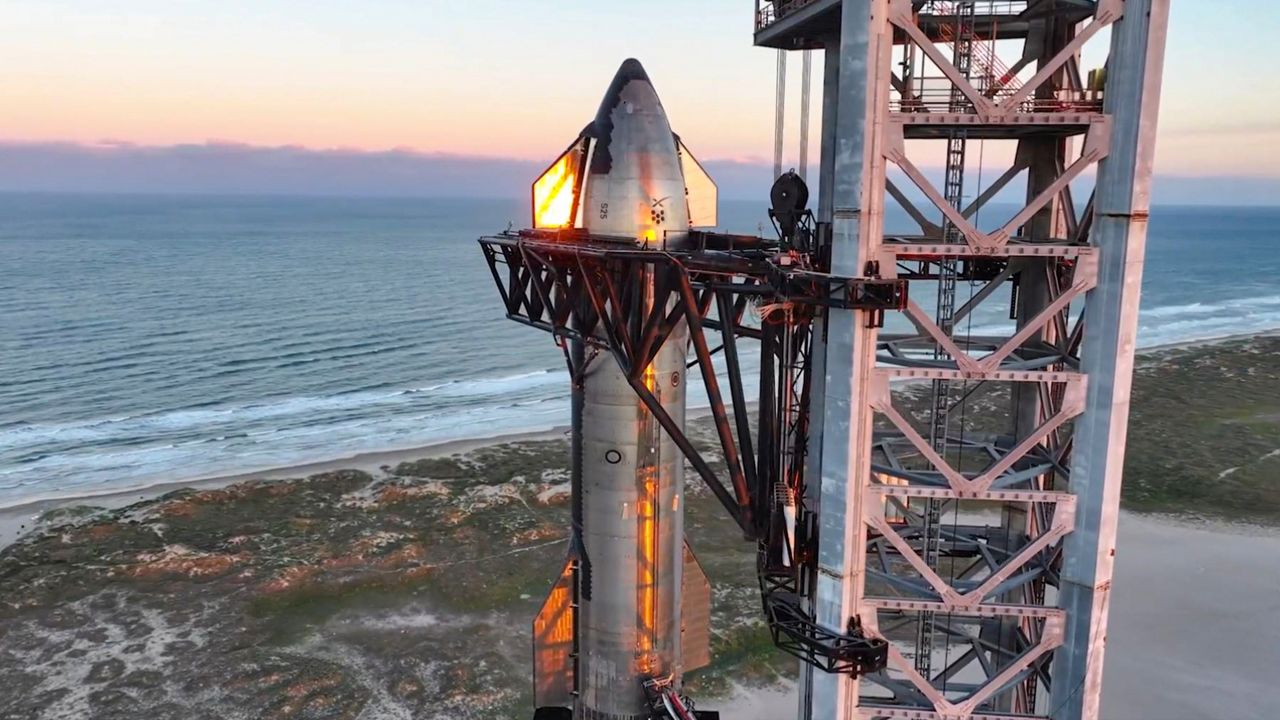BOCA CHICA BEACH, Texas — SpaceX announced a new target date for its third uncrewed test flight of its famed Starship, which is designed to take people to the moon and Mars.
What You Need To Know
- SpaceX is waiting for FAA approval for launch
- Learn more about the Starship spacecraft and the Super Heavy rocket ▶
On Wednesday, SpaceX announced it is targeting Thursday, March 14, as the third test date.
It posted on X, formerly known as Twitter, that it cannot confirm that day due to the California-based company “pending regulatory approval.”
The third flight test of Starship could launch as soon as March 14, pending regulatory approval → https://t.co/bJFjLCiTbK pic.twitter.com/yHqoWFSKdY
— SpaceX (@SpaceX) March 6, 2024
The second test flight of the Starship a few months ago resulted in it blowing up a second time. (More on this below.)
SpaceX is waiting for the Federal Aviation Administration to give its final approval; before the third test flight, the company must receive a license modification from the agency that focuses on safety, environmental and other regulatory requirements.
During the third flight test, SpaceX wants to attempt a series of demonstrations, plus it wants the Starship to splash down in the Indian Ocean.
“The third flight test aims to build on what we’ve learned from previous flights while attempting a number of ambitious objectives, including the successful ascent burn of both stages, opening and closing Starship’s payload door, a propellant transfer demonstration during the upper stage’s coast phase, the first ever re-light of a Raptor engine while in space, and a controlled reentry of Starship. It will also fly a new trajectory, with Starship targeted to splashdown in the Indian Ocean,” SpaceX explained.
History of Starship taking flight
Known jointly as Starship when stacked together, both the Super Heavy rocket and the Starship spacecraft will launch again from Boca Chica Beach, Texas.
Both the Super Heavy rocket, with its 33 Raptor engines fueled by thousands of tons of sub-cooled liquid oxygen and liquid methane, and the Starship are designed to be reusable.
The Starship is planned to carry 100 crew members and cargo to Earth orbit, the moon and eventually Mars, according to the ship’s user guide.
In April 2023, SpaceX attempted to launch the Starship, but a series of failures caused the massive rocket to explode.
The FAA issued a series of specifications before the California-based company could attempt to launch again, which included 63 corrective actions.
During its second test in November 2023, SpaceX was forced to blow up Starship.
The new stage separation, called hot stage separation, worked, but ended up destroying the Super Heavy rocket.
“Following stage separation, Super Heavy initiated its boostback burn, which sends commands to 13 of the vehicle’s 33 Raptor engines to propel the rocket toward its intended landing location. During this burn, several engines began shutting down before one engine failed energetically, quickly cascading to a rapid unscheduled disassembly of the booster,” SpaceX described.
SpaceX stated the most likely cause of the booster blowing up was a filter blockage where liquid oxygen fuel goes to the engines.
Minutes later after the hot stage separation, SpaceX could not regain signal to the Starship spacecraft and was forced to destroy it.
“A leak in the aft section of the spacecraft that developed when the liquid oxygen vent was initiated resulted in a combustion event and subsequent fires that led to a loss of communication between the spacecraft’s flight computers. This resulted in a commanded shut down of all six engines prior to completion of the ascent burn, followed by the Autonomous Flight Safety System detecting a mission rule violation and activating the flight termination system, leading to vehicle breakup,” the company stated.
SpaceX stated it has corrected the issues (17 corrective actions) that occurred during the second flight attempt.
Last week, media reports stated the FAA closed its investigation into Starship’s second test flight.



